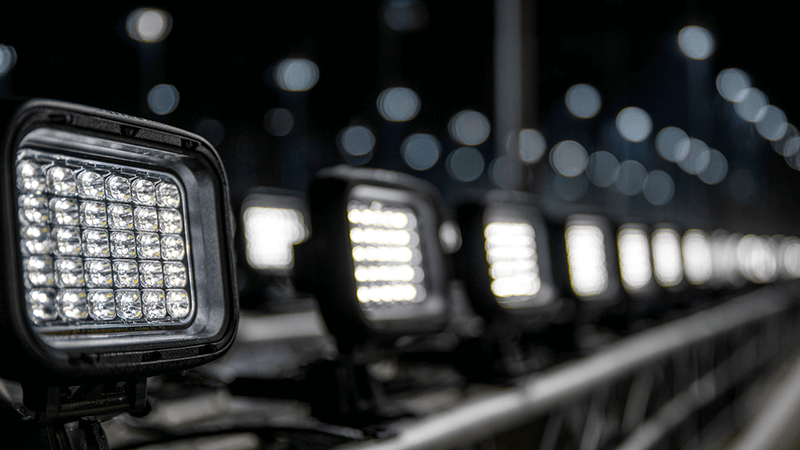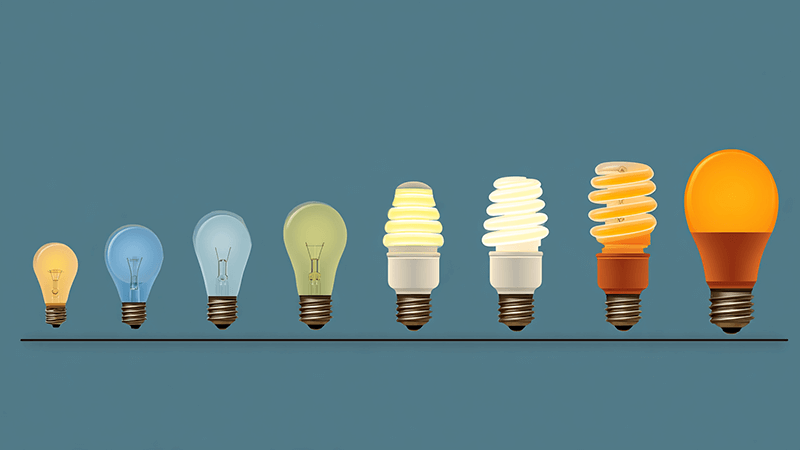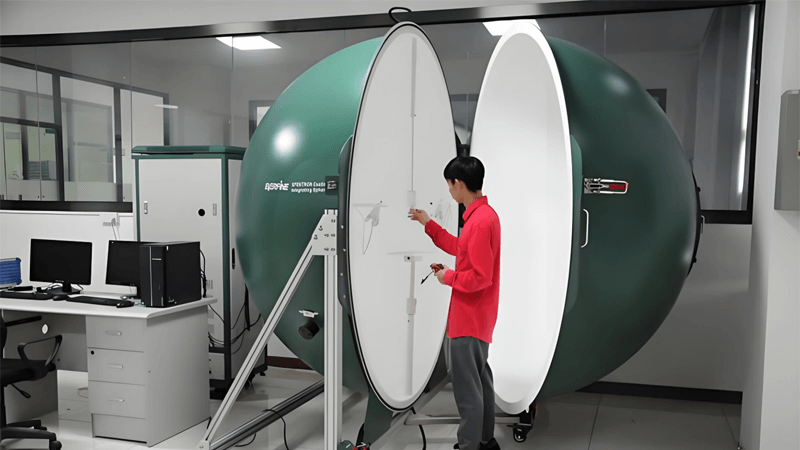Are you confused by new LED floodlight "innovations"? Many are just marketing tricks that waste your money and cause project failures. I will show you what is real.
The most important innovations in LED floodlights are not flashy gimmicks, but improvements in smart controls, genuine energy efficiency, and reliable thermal management. Be careful with buzzwords like "graphene cooling" or "driverless" technology, as they often hide poor quality and will fail on your projects.

I’ve been in the LED lighting industry since I worked on a factory floor. Now I run my own manufacturing business, Upward Lighting. I have helped many partners, like Shaz, a purchasing manager in the UAE, navigate the market. I have seen many trends come and go. Many so-called "innovations" are just new ways to sell you old or bad technology. I want to show you the difference between a real improvement and a marketing trick. It is important to know this so your projects succeed. Let’s look at the details.
What is the newest trend in lighting?
You see terms like "smart lighting" and "human-centric" everywhere. But are these features really adding value? Or are they just expensive gimmicks? I will explain what to look for.
The biggest real trend is integrated smart controls like DALI or 0-10V dimming. These save energy and allow customization. But many suppliers misuse terms like "full-spectrum" for cheap products that do not actually provide the promised health or performance benefits. You must be careful.

Many new trends sound great, but you need to look closer. The push for "healthier" lighting is a perfect example. Some suppliers are taking advantage of this. They use marketing terms like “full-spectrum” and “human-centric lighting” (HCL) to sell cheap products at a high price. I have seen many of these lights. They claim to be like natural sunlight. In reality, they are just standard, low-cost blue LED chips. The suppliers cover them with a poorly mixed phosphor powder. This creates a spectrum that looks continuous on a basic test, but it is very rough and uneven. It does not provide the benefits of true natural light. Real human-centric lighting requires high-quality, specifically engineered LEDs and advanced control systems to mimic the sun’s natural cycles. It is a complex science, not just a special powder. When a price for a "full-spectrum" light seems too good to be true, it is probably a fake.
The Difference Between Marketing Hype and Real Innovation
A real trend should solve a real problem for you, like high energy bills or poor light quality. A fake trend just creates a new sales pitch that can cause problems later.
| Feature |
Marketing Gimmick |
Genuine Innovation |
| Smart Controls |
A cheap, unstable smartphone app that only works with one product line and often disconnects. |
Open protocols like DALI, DMX, or Zigbee that integrate with building management systems for reliable, automated control. |
| Full-Spectrum / HCL |
A standard blue LED with a cheap phosphor mix, marketed as "sun-like" to improve well-being. |
High-quality, high-CRI (95+) LEDs with a truly engineered spectrum and tunable color temperature to support circadian rhythms. |
Always ask your supplier how their "innovation" works. If they can only give you marketing slogans, be very careful. True innovators can explain the engineering behind their products.
Who makes the best LED floodlights?
Choosing a supplier is tough. Everyone claims to be the "best". A wrong choice means project delays, budget overruns, and unhappy clients. I want to help you spot a reliable partner.
The "best" LED floodlight manufacturer is not about famous brand names. It is about honesty and quality components. They provide transparent data, use reliable drivers and chips, and engineer effective thermal management systems, not marketing gimmicks like graphene paint.

As a purchasing manager, you are constantly presented with new products that promise revolutionary performance. One of the most common gimmicks I see today is "graphene cooling." The marketing is very appealing. Graphene is a wonder material, so a graphene heatsink must be better, right? The answer is almost always no. I tested one of these lights for a client. It looked very modern. But when we put it under a thermal camera, we saw a dangerous hot spot right on the LED chip. The heat was not moving away. We then tested an older floodlight with a simple, heavy aluminum heatsink. It ran 15°C cooler than the new "graphene" light. The problem is that these companies are not using graphene correctly. They just spray a very thin, cheap graphene coating onto a standard, often poorly designed, aluminum heatsink. Graphene is excellent at moving heat in one direction. But there’s a huge thermal barrier between the coating and the aluminum base. The heat from the LED chip gets trapped and cannot escape to the cooling fins.
Why "Graphene Cooling" is Often a Red Flag
A well-engineered heatsink made from pure aluminum will always perform better than a cheap heatsink with a fancy coating. The best manufacturers focus on physics and quality materials, not buzzwords.
| Heatsink Design |
How it Works |
Real-World Result |
| Well-Designed Aluminum Heatsink |
Uses a large surface area and pure aluminum to conduct heat from the LED chip to the surrounding air efficiently. |
Lower LED operating temperature, leading to a long, stable lifespan and consistent light output. |
| "Graphene-Coated" Heatsink |
A thin layer of graphene paint on a standard heatsink. The coating creates a thermal barrier, trapping heat. |
High LED operating temperature. The heat cannot escape, causing rapid light decay and early product failure. |
When a supplier emphasizes a single, "magical" material, it’s often to distract you from poor overall design. The best makers will talk about their total thermal management system, including the quality of the aluminum, the path from the chip to the fins, and real-world temperature data.
What is the next lighting technology after LED?
Are you worried that LED technology will become outdated soon? Many people wonder what is coming next. Investing in today’s technology can feel risky. Let’s look at the future honestly.
For most applications, there is no immediate replacement for LED. Technologies like Laser Diodes and MicroLEDs are still too expensive or specialized. The future is not a new light source, but making LEDs smarter, more efficient, and more reliable.

I am often asked what will replace LED. For now, the answer is nothing for general lighting like floodlights. LED technology still has so much room to improve. The real innovation is not in finding a new light source, but in perfecting the LED system. Unfortunately, some suppliers twist this idea to sell you bad products. They promote "driverless" or Driver-on-Board (DOB) technology as the next step forward. They claim that by removing the separate driver, the light will have a longer life because there is one less component to fail. This is dangerously misleading. In my experience, these DOB products are one of the biggest causes of project failure today. A traditional LED system uses a separate driver to convert AC power to DC and manage the electricity. This driver generates heat, but it is isolated from the sensitive LED chips. A DOB design puts the driver components directly onto the same board as the LEDs. Now, all the heat from power conversion is right next to the LEDs. This cooks the LEDs, causing them to dim very quickly and fail completely.
The Dangers of "Driverless" DOB Technology
A DOB solution is marketed as simpler and more advanced, but it introduces a fatal flaw into the system by combining heat sources. A quality, isolated driver is still the most reliable solution.
| Feature |
Traditional Driver (Isolated) |
"Driverless" DOB Solution |
| Heat Management |
Heat from the driver is kept separate from the LEDs. The LED board stays cooler. |
Heat from driver components and LEDs are on the same board, causing dangerously high temperatures. |
| Lifespan |
Long and predictable lifespan (50,000+ hours) because components operate at safe temperatures. |
Very short lifespan. Severe light decay can happen in just a few thousand hours due to extreme heat. |
| Voltage Stability |
A good driver provides clean power and handles voltage fluctuations (e.g., 85V-265V) efficiently. |
Very sensitive to voltage changes. High voltage can burn it out. Low voltage causes dimming. Inefficient at wide voltage ranges. |
| True Cost |
Higher initial cost, but much lower total cost of ownership due to reliability and long life. |
Very low initial cost, but extremely high total cost due to frequent replacement and maintenance. |
The "next big thing" is not removing essential components. It is making every component better. A high-quality, efficient, and smart driver is the key to a reliable, long-lasting LED floodlight.
What is the newest most efficient lighting technology?
You see suppliers advertising floodlights with incredible efficiency, like 180 lm/W or even 200 lm/W. But when you get the products on site, they seem dim. This deception is common.
The most efficient lighting technology is a high-quality LED chip paired with a high-efficiency driver from a reputable brand. Be very skeptical of extremely high lm/W claims, as they often come from overstating specs or overdriving cheap components, which leads to fast failure.

The race for higher lumens per watt (lm/W) has led many suppliers to cheat. As a purchasing manager, this is one of the most important deceptions you need to identify. It directly impacts your project’s success and budget. I had a client in Europe who had this exact problem. He needed to light a large commercial parking lot. He found a supplier offering 200W floodlights with a very high claimed efficacy at a low price. He bought 100 units. After installation, the client complained that the lot was too dark. We got a sample and tested it. The 200W floodlight was only drawing 140W of power from the wall. The supplier simply put a "200W" label on a 150W light. To meet the project’s lighting standard, my client had to buy and install 40 more lights. The cheap price ended up destroying his budget. This happens in two ways: faking the power rating, or overdriving the components to get a temporary high brightness that quickly fades. They use low-quality LED chips and cheap drivers, then push them past their safety limits. The light looks bright for a short time, but the intense heat and stress cause it to fail very quickly.
How to Verify Efficiency Claims
You don’t have to be a victim of these false claims. You can protect yourself and your company with a few simple steps.
| Metric |
Supplier’s Claim |
The Reality |
Impact on Your Project |
| Power (Watts) |
200W |
The light only draws 150W. |
The light is 25% dimmer than expected. You will fail to meet illuminance standards. |
| Efficacy (lm/W) |
160 lm/W |
The light is overdriven. It hits 160 lm/W briefly but is unstable and produces extreme heat. |
The lumen output drops by 30% in the first year. The light’s lifespan is cut in half. |
| Lifespan |
50,000 Hours |
The light fails after 15,000 hours due to heat from being overdriven. |
You must spend money on maintenance and replacement much sooner than planned, increasing total cost. |
To avoid this, always ask for third-party test reports like LM-79 and IES files. More importantly, ask for the brand of the LED chips and driver. A supplier using quality parts like Lumileds chips and Mean Well drivers is proud to tell you. A supplier using cheap, no-name components will avoid the question.
Conclusion
True innovation is about honest engineering, not marketing tricks. Focus on real-world performance, quality components, and transparent suppliers to ensure your lighting projects are successful and built to last.